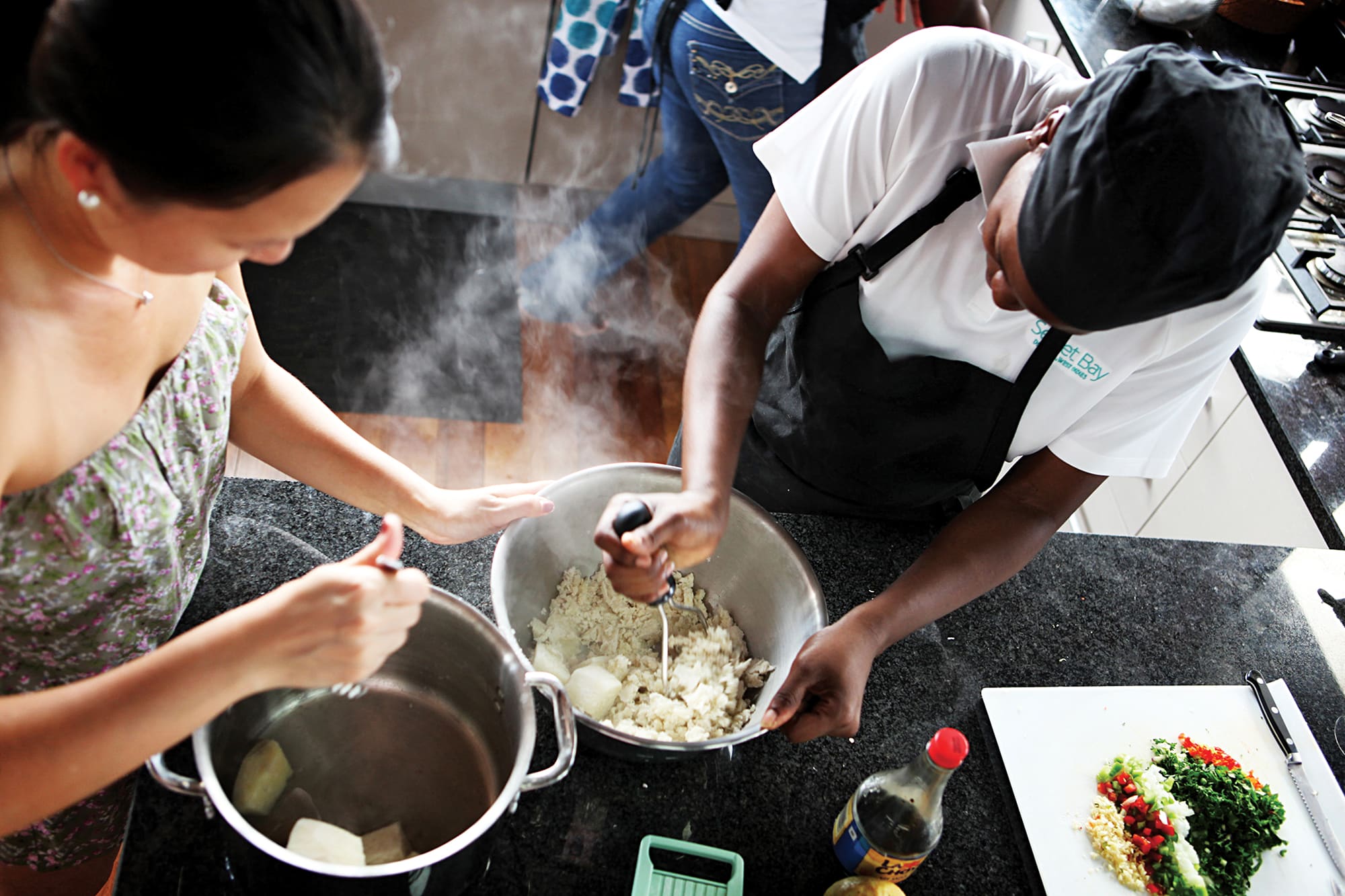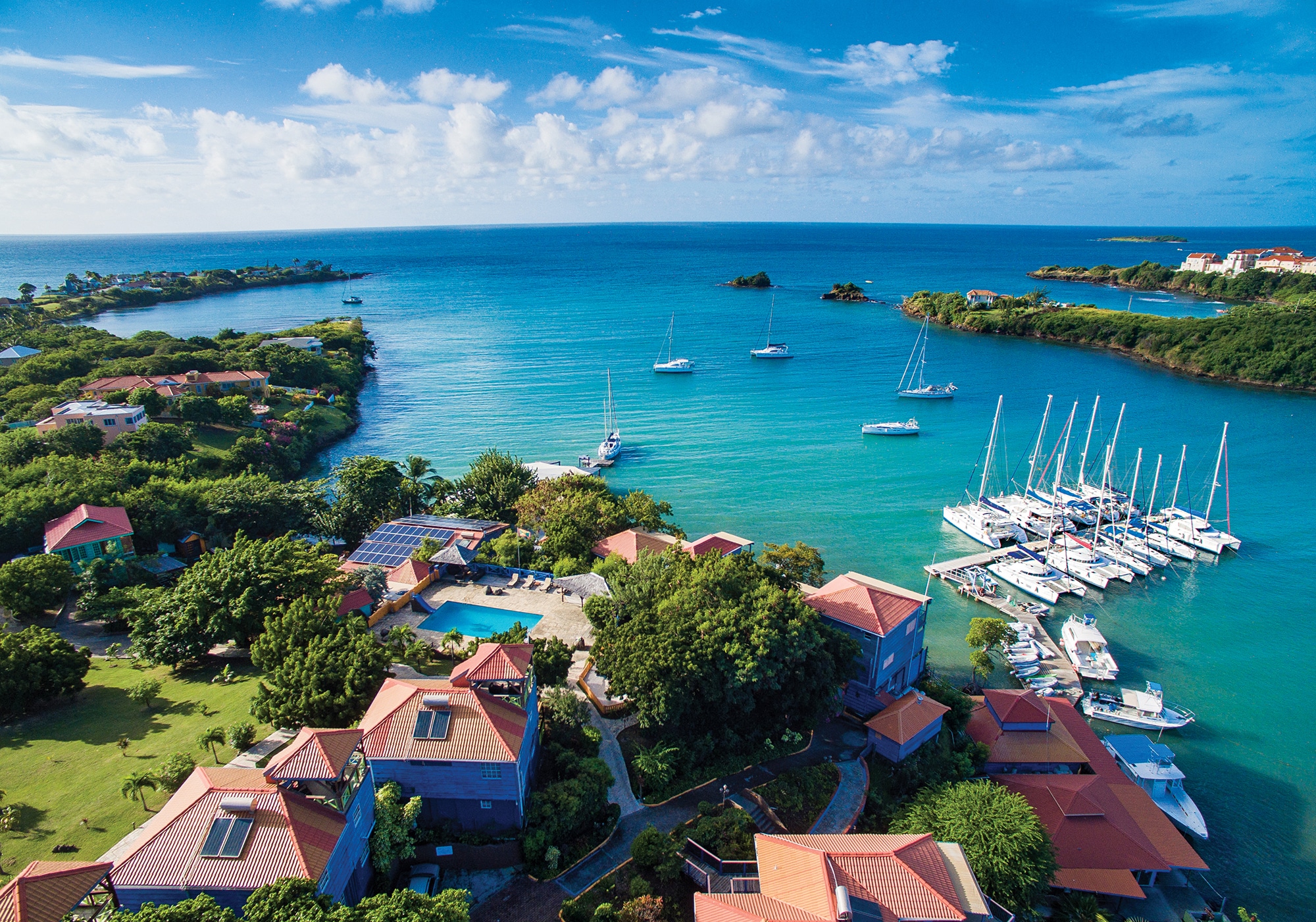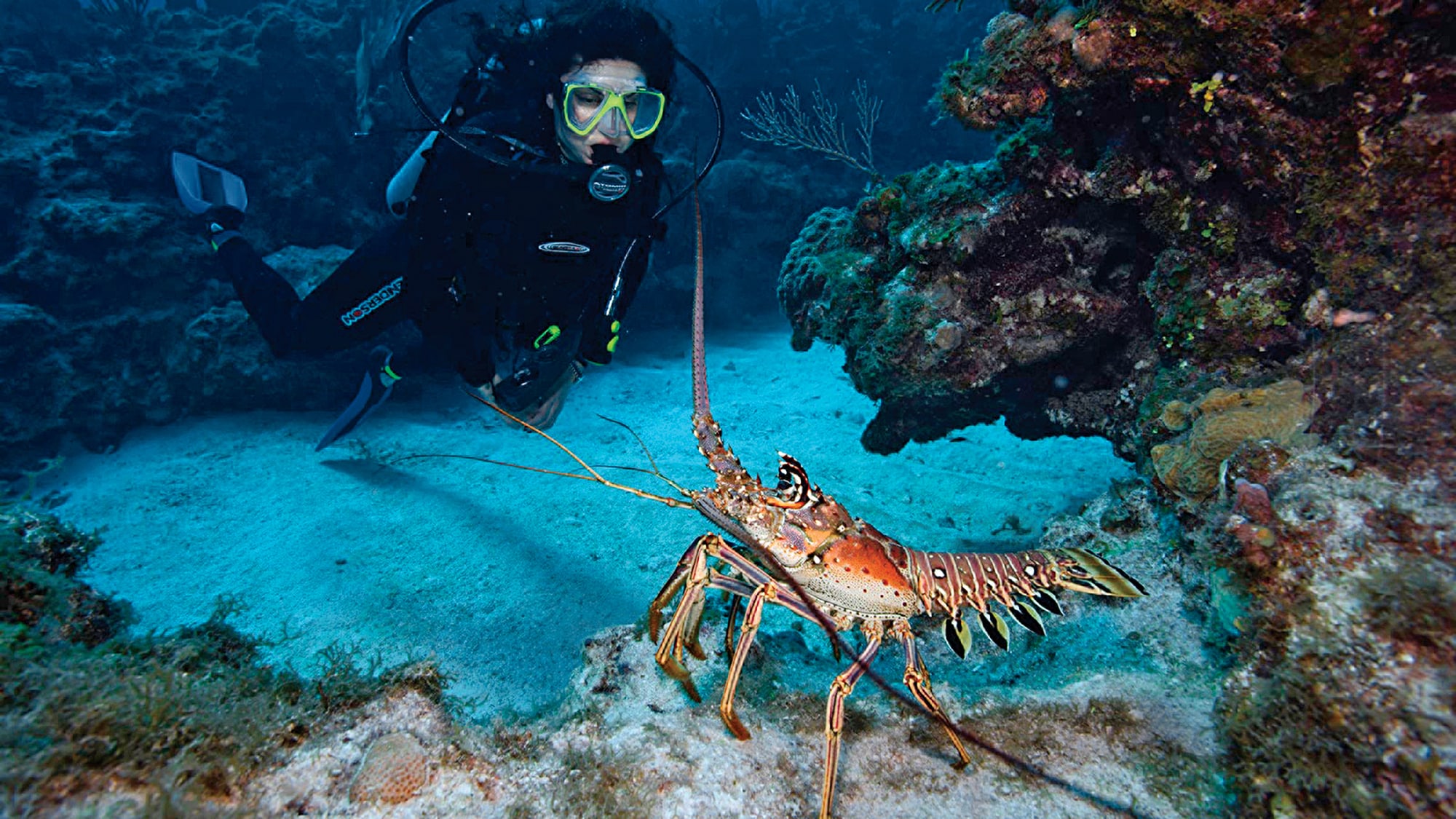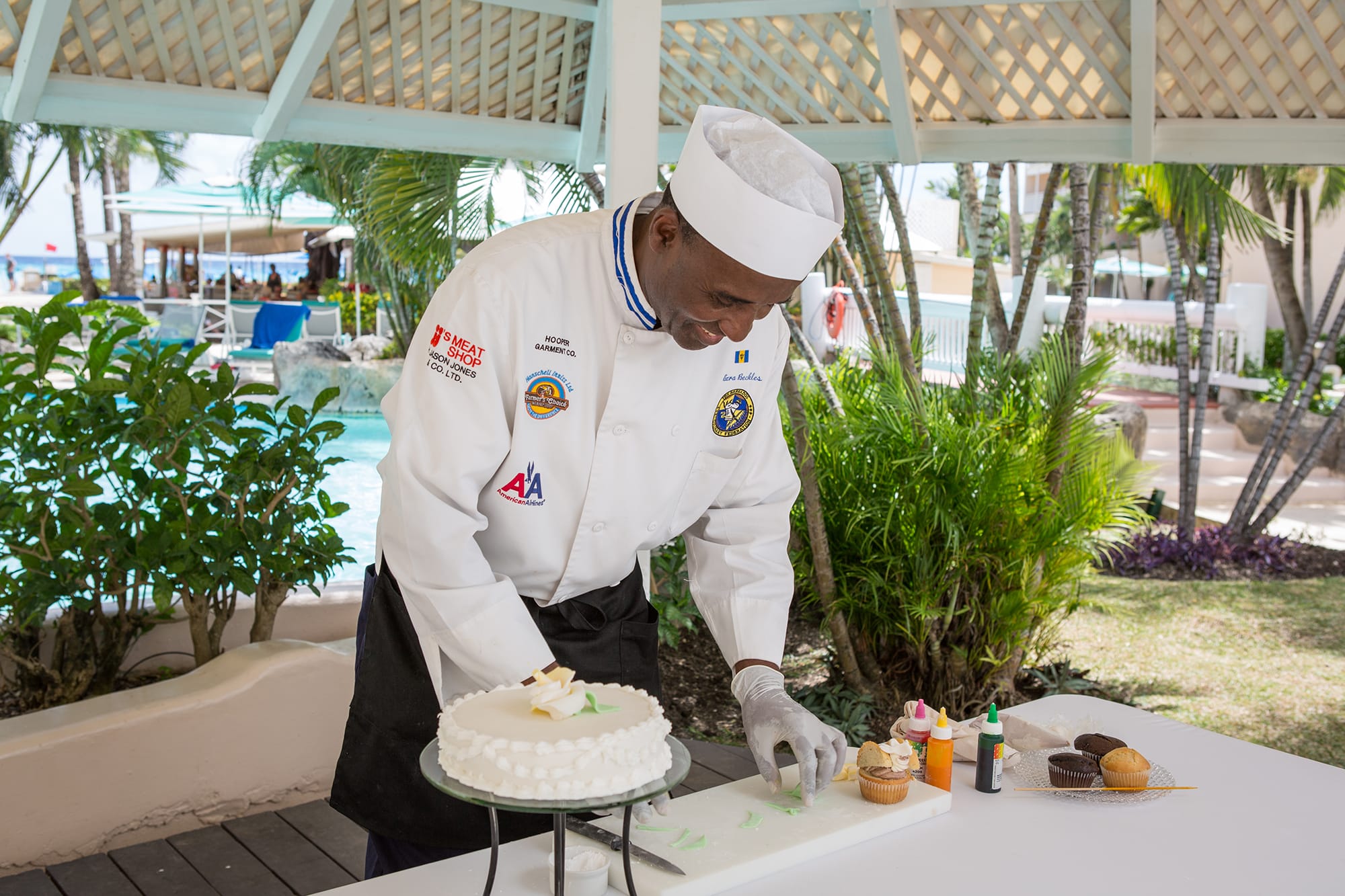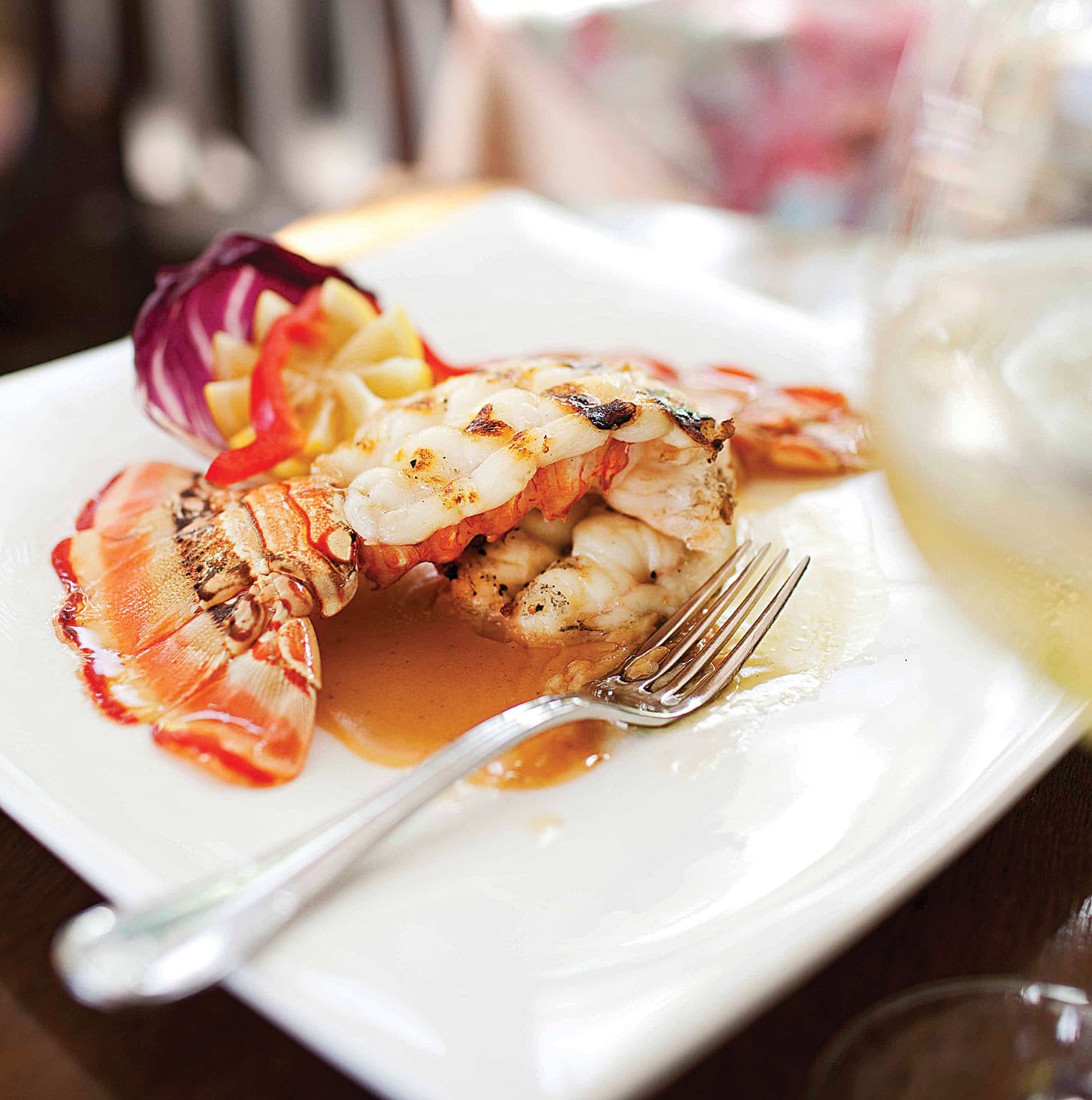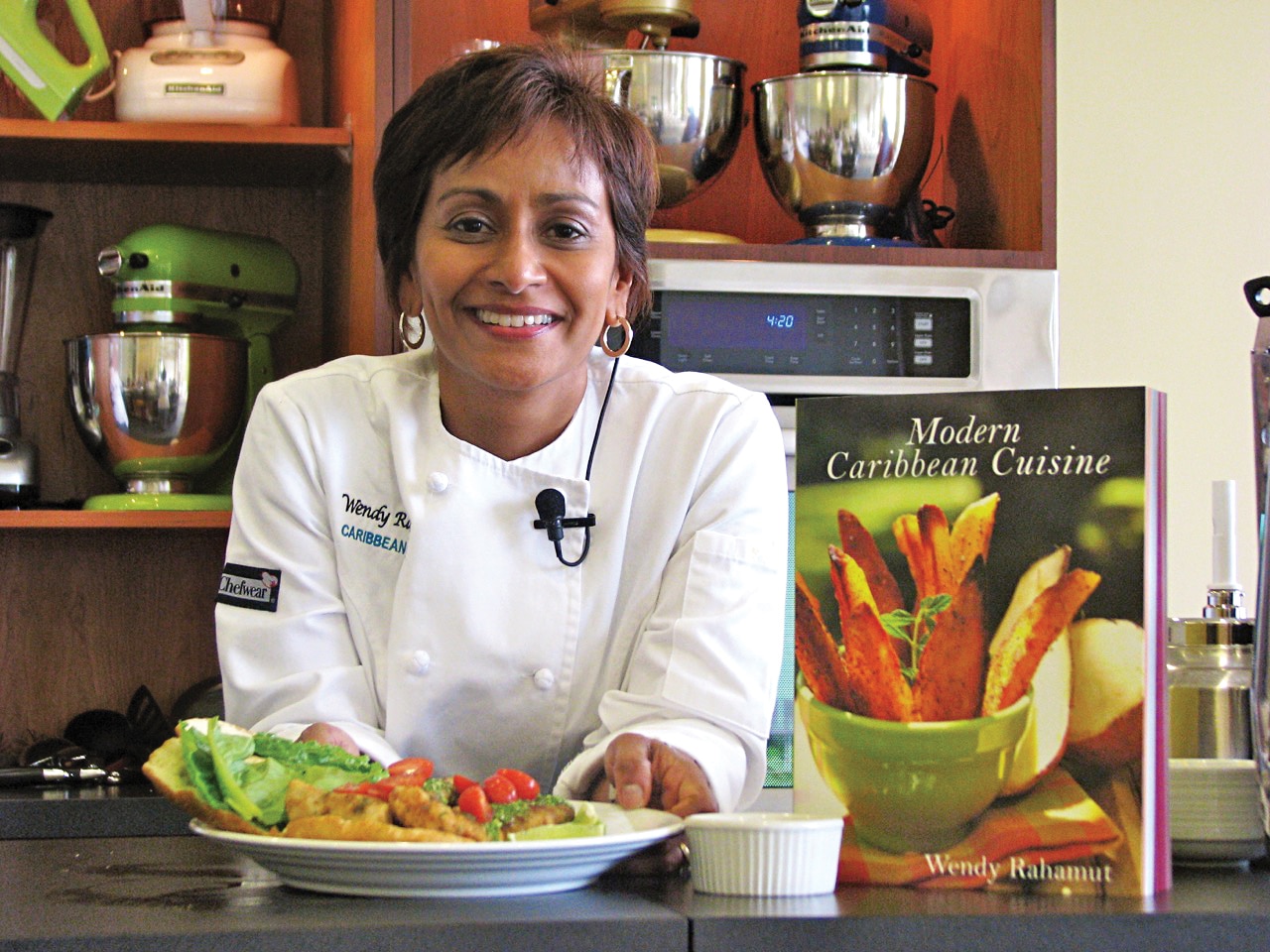8 Top Cooking Classes In The Caribbean
Whether you're a die-hard foodie or simply like to eat, a vacation cooking class is a wide-open window into island culture. Plus, your newfound know-how lets you keep the holiday going — and impress friends — when you make Caribbean food back home.
Dominica - Secret Bay
Each of Secret Bay's eight villas and bungalows comes not only with breathtaking views, but also an envy-inducing kitchen — an espresso machine, a convection oven and that home-away-from-home rarity: sharp knives. So one of the cooks comes to your place for a private, personalized class. "Class here is a relaxed chill session," says Secret Bay's head chef, Eric Subin. "There's nothing tutorial about it. It's about getting to know the locals as much as it's about local dishes."
With no set lesson plan, go ahead and request your favorites from the Secret Bay kitchen. Popular choices? Beer-battered lionfish (made with Kubuli, the local brew), callaloo soup, shrimp with creole sauce, pumpkin rice, breadfruit salad and savory yam pie, all served with a big helping of local knowledge: Caribbean yams — white, starchy and not at all sweet — are nothing like the yams back home; the bay leaves used for seasoning grow wild right outside the villa door; and the delicious buttery lionfish is venomous — but not after it's been cleaned and its spines removed. "People are amazed they're eating something that was once poisonous," Subin says.
For more culinary intel, guests hang out at the Souce Shack — where chef and team prepare all of Secret Bay's food. "It's the place to have drinks, talk while we're cooking, ask questions and get more connected to the food," Subin says. The place to taste too. "I always give samples."
Grenada - True Blue Bay
Esther Benoit wears a chicken breast on one hand like an oven mitt. That's what it should look like, she explains, when you've cut it properly. For today's class at True Blue Bay, a boutique resort on Grenada's south coast, she and fellow cook Omega Thomas are preparing their signature dish: callaloo-stuffed chicken with nutmeg sauce. We've lucked in. "Feel your way in with the knife to make a pouch for the stuffing," Benoit instructs two volunteers from our group of a dozen. Sure enough, under her watchful eye, they're soon showing off their own chicken mitts.
Meanwhile, Thomas waves a long-stalked, platter-size callaloo leaf, the raw ingredient that will be stewed with onion, garlic, sive (like chives), thyme and brown sugar to make the stuffing. "If you don't have callaloo, you can do it with spinach," says Benoit.
The two Grenadian cooks have been showing guests how to make creole fish, curry-chicken roti and other island dishes at True Blue Bay for more than six years. Their barbed repartee helps the class go down easy. "Come look at me," Benoit says, urging us to get closer to the demo. "She loves to be looked at," Thomas quips from the sidelines.
With the chicken sizzling in one pan, Benoit starts the sauce in another, pouring in coconut milk, cream, coconut cream and nutmeg, Grenada's premier spice. Grated nutmeg, yes, but also local nutmeg syrup. "Bring it to a boil, but not a boil where it falls over," she says. Thomas tastes Benoit's work, island style. She dribbles bubbling sauce from the big stirring spoon into her palm (yow!) — "you gotta be a pro to do tasting like this" — and laps it up from there.
We're all salivating for a taste. But first, Benoit has to show us how to present the dish. She slices the breast on the diagonal — "take your time, do it with love" — fans the slices on a plate so the stuffing shows, then spoons on the sauce.
Finally. "Seconds always available," says Thomas as generous tasting plates are handed around. Most of us take her up on the offer.
Nevis - Four Seasons Resort Nevis
Executive sous chef Kai Autenrieth happily dishes kitchen secrets while showing how to make his charcoal-grilled lobster with mango salsa. But there's a catch, literally: You have to snare the main ingredient.
Autenrieth and a Nevisian divemaster take you on a two-tank, lobster-hunting dive. Equipped with a local-style lasso — "It's basically a stick with a sling on the end," Autenrieth explains — you spot your lunch, get the loop around its tail, work it up toward the middle of the body, and pull it closed. Easy-peasy. Except you need to be quick. "The lobsters are very strong and can flip themselves out of the sling. One guy had his lobster escape at least six times." Sounds tricky enough that I fear I'll be stuck eating a burger. Autenrieth merely laughs; no one gets skunked. "On good days, we come back with so many lobsters I barely know what to do with them."
Next, the hunt moves to those poison-spined lionfish, which are also overrunning Nevis' reefs. "They're a terrible invasive species, so we have to kill them anyway." Good news: Spearing a lionfish is a lot easier than lassoing a lobster. "They don't really move — they just hang out in one place and look pretty."
Back on land, Autenrieth demos lunch, starting with lionfish ceviche and "something cold, fresh and light with lobster." (Cross your fingers it's the melon gazpacho with lobster salsa on top.) Two mains too: grilled lobster with three sauces (mango salsa, clarified butter and chimichurri made with herbs from the resort's garden); and lionfish grilled in foil with garlic, onion, white wine, butter and olive oil. Class keeners go hands-on at the grill, flipping the lobster and fish, while Autenrieth works on the sides, including fried plantains glazed with rum, butter and brown sugar and topped with finely chopped bacon.
Spoiler alert: Autenrieth is also an avid underwater photographer, so you're likely to find a framed photo of yourself and your catch delivered to your room.
Barbados - Turtle Beach
In the Oistins fish market, you can snap a selfie holding a giant lobster. The renowned market is just one of the stops on the morning culinary tour led by sous chef Mark Linton. Pro tips fly fast and furious. "The eyes tell us a lot," says the native Bajan. "When a fish is fresh, the eyes are bright and bulging. If they're discolored or sink into the head, the fish has been out of the water a while. Doesn't mean it's bad, but you want to use it soon." And how do you choose a perfect pineapple? "Look for pinholes that might suggest insect damage," he explains at the Bridgetown farmers market. Then it's back to the resort for a cooking demo "that incorporates everything we learned," featuring a market fish such as mahimahi, kingfish or flying fish, which — served with cou-cou (similar to polenta) — is the island's national dish. "Guests usually see only the finished dish. I show them what happens behind the scenes."
Linton has learned, however, that some things about island fish need to be explained before browsing the market. "One time a local customer called out, 'Give me 8 pounds of dolphin.' Guests were shocked. Now I tell them, no, we don't eat Flipper. On Barbados, and in most of the Caribbean, we call mahimahi 'dolphin.'"
Turtle Beach's executive pastry chef Ezra Beckles starts his weekly class — another of the resort's culinary offerings — with an apple tart. But when they're in season, he uses tropical golden apples, a sweet-sour fruit that's completely unrelated to the apples we know. And he makes oddball flours from scratch, with local root vegetables and uncommon fruit. If you're lucky, he might also demo a short crust made with cassava and sweet-potato flours. Your job? To line the pans with dough. For extra brownie points, ask Beckles how he serves his crazy ice-cream flavors, which include curry and hot-pepper sauce, or about his "dog dumpling frozen parfait." The main ingredient isn't what it sounds like.
Bahamas - Graycliff Hotel and Restaurant
Executive chef Elijah Bowe sets the bar high: "I'll show you how to take your cooking from level one to level 10," he says. A Graycliff Culinary Academy class starts with practicing basic knife skills. Bowe's thing is Bahamian home cooking with a gourmet twist and layers of flavor, "so you get a party in your palate and a party in your brain," he explains. When he gets the class making conch chowder, "the most popular appetizer," he turns to Graycliff's 250,000-bottle wine cellar (a tour is included) to lift flavor. "Sherry pairs well with the local goat pepper in the chowder." For those of us without access to conch at home, "use shrimp or calamari, but add it at the end since it needs less time to cook."
The main course is hog snapper, which is traditionally steamed in Bahamian kitchens. But Bowe's twist is to do it papillote style, wrapped in clear cooking foil. "Each person in the class makes their own, and then you're served your dish for lunch afterward." No hiding from one's mistakes.
Side dishes might include Bahamian staples like mac and cheese (not even a distant relative to Kraft here) and "embellished" coleslaw. "I like to add tropical fruits such as mango and pineapple. I don't use sugar — it comes from the fruit — or mayonnaise." (He substitutes sour cream.)
When the cooking is done, take off your Culinary Academy apron (yes, you get to keep it) and head to the dining room for a taste. And, as with all these classes, the recipes are available to take home. "But don't make a carbon copy," Bowe advises. "Use what I do as a guideline, not a blueprint. Make the recipe your own."
No room key required: You don't need to be a hotel guest to hit these classes.
St. Kitts – Caribbean Cooks Cooking ClassWest Indian home cooking, Kittitian style: creole fish, rice and peas, and coconut bread-and-butter pudding with rum and brown-sugar glaze. All washed down with "bush" iced tea and stories that tell the origins of the recipes. Class is held on the grounds of 18th-century Fairview Great House and includes a full lunch.
Trinidad – Wendy Rahamut School of CookingWith four cookbooks, a TV show and an annual calendar, Wendy Rahamut headlines the Trini cooking scene. In the "party food" class, we made cassava puffs, fried cou-cou strips, and coconut shrimp with a spicy orange dipping sauce I've been wowing friends with ever since.
Antigua – Nicole's TableNicole Atherton's intimate hands-on classes in her hilltop home (with a killer ocean view) range from curries to jerk to cooking with rum (Key-lime rum cake, barbecue steak with a rum glaze). Before she started us slicing and dicing, she poured glasses of rum punch to break the ice, then served up a heap of Caribbean kitchen tips while we worked. How to make your own vanilla extract? Just steep vanilla beans in good dark rum.
